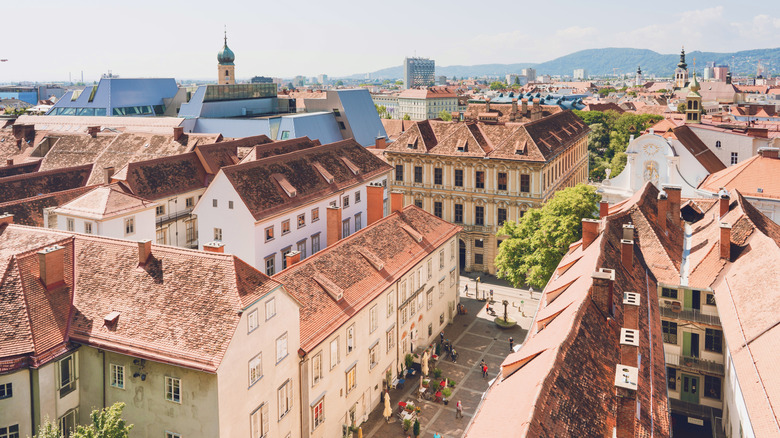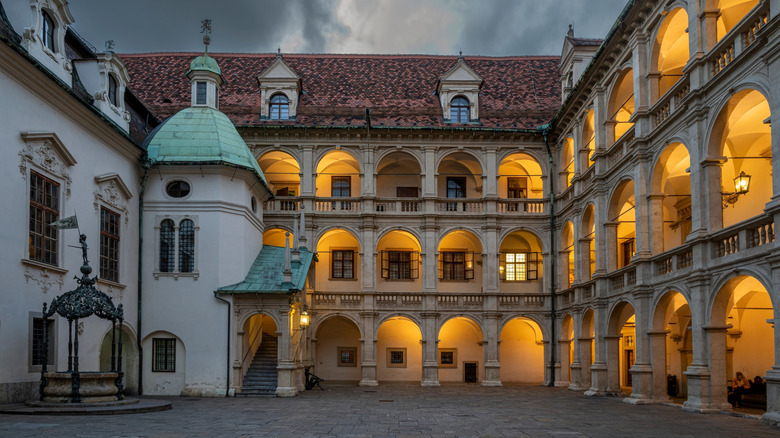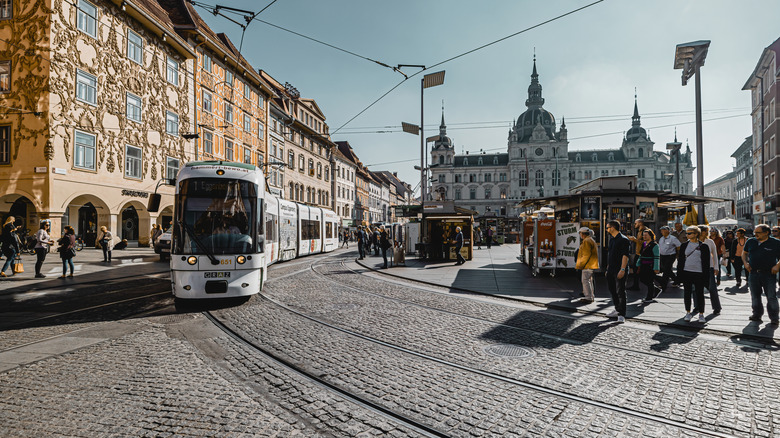Austria's 'Culinary Capital' Is A College City Under The Tourist Radar With Futuristic Art And A Fun Food Scene
About a two-and-a-half-hour drive from Vienna, the Austrian capital that's famous for its coffee culture, you'll find another Austrian city that's flying under many tourists' radars. Graz is Austria's second-largest city, but unlike the capital, with its Baroque glitz and big city personality, Graz has an easygoing charm, more attuned to its green surroundings in beautiful Styria (Austria's second-largest state). Indeed, sustainability is a big deal in Graz, with almost 60% of its land reserved for urban green spaces, and its stunning UNESCO-listed old town is entirely car-free. The focal point of the old town is the Hauptplatz, a bustling square with frescoed architecture and the striking white facade of the Rathaus (town hall), as well as a collection of market stalls selling local culinary specialties. But go beyond the historic core, and you'll find up-and-coming districts with farm-to-fork dining bolstered by a nature-loving student community, a brilliant futuristic-looking modern art museum, and a tram network that includes a glass funicular that takes you directly to the peak of Schlossberg Hill.
While Graz is closer to Slovenia's relatively undiscovered capital, Ljubljana, it's easier to make your way from Vienna airport, which is around 125 miles away and a two-hour and 20-minute drive. The route is easily accessible via public transport too, with direct trains from Vienna Airport taking around three hours and trains from Vienna Central taking approximately two hours and 35 minutes. As such, we recommend spending a day or two in the capital before traveling to Graz, eating Wiener Schnitzel, and sampling Vienna's unforgettable wine culture.
What to do in Graz
Journeying directly up Schlossberg Hill is a perfect way to take in your surroundings. At the top, you'll have views across Graz's eclectic topography, with Romanesque, Gothic, and Renaissance rooftops, as well as distant views of the farms and woodlands of the Styrian countryside. At the top, there's a 16th-century clock tower, the Uhrturm, which is the only thing left of the fortress that crowned the hill before Napoleon had his forces destroy it. Intriguingly, there are multiple routes up Schlossberg Hill, including the modern glass-topped Schlossbergbahn funicular and a series of walking trails. But inside the hill, there's also a lift that takes you up to the peak in seconds, and for the way down, a twisting 209-foot-long slide — the longest indoor slide in the world.
Getting around the Altstadt von Graz (Graz Old Town) is extremely comfortable as it's car-free and very walkable, but there is a free public tram too if you don't want to walk. However, exploring the old town on foot will lead you to many of the city's most wonderful secrets, including elegant arcaded courtyards connected by antique alleyways as well as a myriad of cafes and galleries. One of the grandest is at the iconic Landhaus, a 16th-century Italian Renaissance masterpiece, with three floors of exterior arcades, that would look effortlessly at home in Venice.
Modern art is easily found in Graz too, with the striking alien-esque facade of the Kunsthaus concealing rotating exhibitions of contemporary art. On the River Mur, the Murinsel bridge is an echo of Graz's time as capital of culture, with an artificial island at its core.
Eating and Drinking in Graz
Some regional food staples to look out for in Graz include things like pumpkin seed oil and Styrian wines like Welschriesling, Gewürztraminer, and the unique local favorite, Schilcher — a dark rosé made from the indigenous Blauer Wildbacher grape. And while all of Austria is known for its fried chicken (think Wiener Backhendl or Viennese fried chicken), the local version is slightly different, made with spice-coated chicken pieces, which are breaded and deep-fried and served with lemon, and sometimes served as a salad with potatoes, and dressed with local pumpkin seed oil. Try it at Der Steirer, which serves a well-curated menu of local and national dishes in central Graz.
Another regional variant of a classic Austrian dish is the Brettljause, essentially an Austrian charcuterie board that in Graz comes stuffed with local cold meat cuts, cheeses, and specialties like Styrian horseradish and freshly baked bread. Most bars and wine bars (Buschenschank) serve their version with slight variations, but Buschenschank Hildebrand is a good choice for tourists in the city center. For more regional specialties, visit the Hauptplatz (the main square) in front of the Rathaus, and you'll find rustic street food stands selling staples like Käsekrainer and Bratwurst sausages.
A more modern dining option in the heart of Graz is found in the delightful Artis. The contemporary space, decorated in dark colors, provides a striking contrast to Graz's historic center. Expect high-quality ingredients like hand-dived scallops sourced from across Europe and magicked into inventive avant-garde creations.


